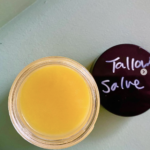When I was at Queen’s University, studying for my BSc degree, I would go to the gym daily to sweat out the stress and sluggishness of classroom and library time. I would go to the gym for as long as 2 hours, which didn’t seem much at the time, when you factored in the wait time for the popular cardio machines (especially after the New Year). Then I joined the Queen’s Triathlon Team and would bike or swim for 2 hours before hopping on the treadmill for another half hour. I worked out like an Olympian, watched what I ate and yet I still felt breathless while ascending stairs and I still maintained my weight at slightly higher than it is now (these days I do 30-60 minutes of light to moderate exercise a day). What gives? The answers, my friends, is physiological adaptation and cortisol.
When we stress our bodies out for long periods of time, either through lengthy to-do lists, negative self-talk, restrictive dieting or prolonged exercise, our bodies respond by producing a hormone called cortisol. This wonderful hormone helps us avoid danger by mobilizing body fat and raising blood sugar, allowing us to “fight or flight”. The problem is, however, if, instead of running from a sabour toothed tiger, we sit in class or have a bagel, the mobilized fat and blood sugar causes insulin, the fat-storing hormone, to be released, leading to weight gain over time.
In addition, exercising in similar ways for a long period of time, say, going for a moderately-paced 60 minute run every day, allows our body to quickly adapt to the activity. We get more efficient at performing the exercise and the positive effects we once saw begin to plateau.
Luckily, there is a way that you can exercise for shorter times and get the results you want. Research shows that High Intensity Interval Training, or HIIT (alternating bursts of high and low intensity activity), is more effective than endurance training and can be performed in a fraction of the time. Because we’re not stressing out bodies out for long, we don’t get the same cortisol spike. Our bodies also don’t have time to adapt to the exercise.
Some of the benefits of 10-20 minutes of HIIT are:
– Increased cardiovascular fitness
– Increased muscle mass
– Increased fat loss
– Increased energy and concentration
– Improved mood
– Decreased stress (and cortisol release)
– Less time spent (meaning extra free time for filing your taxes, going to the park, finishing that book and saving the world)
– Better compliance (participants are more likely to stick to HIIT than other forms of exercise)
A study by the University of Western Ontario found that 4-6 cycles of 30-second bursts of sprinting alternated with 4 minutes of rest (a total of approximately 2-3 minutes of exercise) performed 3 times a week decreased fat mass more effectively than 60 minutes of endurance running. HIIT is time-effective for busy adults, requires no equipment and is varied and challenging, preventing you from getting bored with the exercise and losing motivation.
How to do it:
– Select your favourite form of cardiovascular exercise: running, cycling, swimming, rowing, jumping jacks, trampoline, exercise machine, random flailing – whatever your style – do your exercise outside in nature for added psychological and physiological benefit.
– Set a timer: for 30 seconds to 1 minute.
– Warm-up: work at about 20-40% of your max effort, lightly moving to get your body feeling warm and your breathing feeling heavier for 2 minutes.
– High Intensity: Start your timer. If this is your first time, do a 30-second interval. If you’re already in fairly good shape, set the timer for 1 minute. Doing the cardio exercise of your choice, increase the intensity to 80-90% of your max effort. You should be breathing heavily, muscles burning, unable to talk, sing or do anything except pray for the time to end.
– Recovery: When the time (30 seconds to 1 minute) is up, enjoy that delicious wave of relief and drop the intensity back down to about 20-40% of your maximum effort. Take this time to get your breathing under control and regain your mental, emotion and physical resources. This will take anywhere from 1 to 5 minutes depending on your starting fitness level. If you’re feeling good, rest for 1 minute, if this is your first time, opt for the longer recovery time of 5 minutes.
– Repeat this cycle for 10-20 minutes.
– Cool Down: After the last high intensity interval, drop your pace back to 20-40% of your max effort for 2 minutes to bring your heart-rate down.
– Repeat the whole thing 2-3 times per week.
The great thing about HIIT is that, not only does it save you time, get you results and leave you feeling great, you can constantly adapt it to meet your fitness levels, preventing your body from adapting and the effects from plateauing. Increase the intensity by aiming for the interval ratio of 1:1 (1 minute high intensity bursts for every 1 minute recovery) and by increasing the intensity, speed or resistance of the high intensity bursts as the exercise becomes easier.
As one of my professors famously says, “If the drug companies could design a pill that did everything exercise can do, they would make so much money that they’d never have to work another day for the rest of their lives.”
You might as well get it while it’s still free.









Great post! I’m a huge fan of HIIT training. You hit the nail on the head when you said that we often plateau, and I think a lot of people get discouraged as a result instead of finding new ways to challenge themselves. They think things aren’t working so what’s the point, instead of realizing that their bodies are actually getting stronger and needing to change.
Glad you liked it! Thanks for commenting!